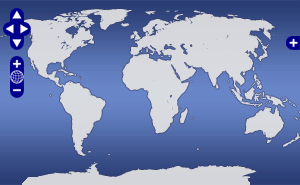Seismic:Reflection:MCS
Processed high-resolution multi-channel seismic reflection (MCS) data from the CORE-VTRCC cruise (2021)
This data set consists of processed high-resolution multi-channel seismic reflection (MCS) data collected in 2021 over the Vitoria Trindade Ridge and Columbia Channel during research cruise CORE-VTRCC on naval vessel Nho Cruzeiro do Sul. The MCS data was acquired using a sparker seismic source with 800 tips model Geo-Source 800, up to 7 kJ energy power supply (GeoSpark 2000X) and a 48-channel streamer, all from the Geo Marine Survey Systems. Seismic acquisition and SEG-Y conversion was performed with the GeoRecorder software, also from Geo Marine Survey Systems. The Geo-Source 800 used a negative discharge for seismic pulse generation which results in a more stable seismic signature with a frequency range between 200 – 3000 Hz, centered at ~1 kHz. The streamer was composed of three hydrophones per channel, with a total active length of 150 m and 2 x 25 m cable stretches, to make a total of 200 m of streamer deployment. Channel distance in the streamer is 3.125 m and channel sampling occurred at 10 kHz. Geographic geometry was supplied by a DGPS antenna placed atop the seismic source configured with the WGS-84 ellipsoid and UTM projection zone 23S. Geometry distance averaged 5 m between source and streamer (dx) and ~20 m between source and first channel (dy). The source was placed at 1.5 m water depth and the streamer was at 0.5 m water depth. Energy levels and trigger interval for pulse generation varied across the survey depending on the bathymetric profile. Vessel velocity during seismic acquisition averaged 4 knots. Seismic processing was performed with the RadExPro software, v2022.1. Basic brutestack seismic processing was made for all seismic lines, following these steps: quality control (data filtering), preprocessing (noise filtering), geometry evaluation, normal move-out correction and stacking. For Lines L01 and L17 enhanced seismic processing was performed, including the following additional processing steps: static correction, deconvolution, multiple suppression and migration. Band-pass filtering was performed between 200 – 1500 Hz. For stacking, common mid points (CMD) gathers were established. See additional information in the associated Methodology report. The processed MCS files are in SEG-Y format. Funding for this work was provided through FAPESP awards 2016/24946-9 and 2020/08847-6, and through the Brazilian Navy program PROAMAZONIA AZUL.
Tagliaro, Gabriel
Investigator
Universidade de Sao Paulo
Gama, Mateus
Investigator
Universidade de Sao Paulo
Britzke, Adolfo
Investigator
Universidade de Sao Paulo
Louro, Vinicius
Investigator
Universidade de Sao Paulo
Bauli, Pedro
Investigator
Universidade de Sao Paulo
Patines, Gabriela
Investigator
Universidade de Sao Paulo
Bonifatto, Gabrielle
Investigator
Universidade de Sao Paulo
Vieira, Ana
Investigator
Universidade de Sao Paulo
Silva, Beatriz
Investigator
Universidade de Sao Paulo
Boni, Geandré
Investigator
Universidade de Sao Paulo
Silva, Luan
Investigator
Universidade de Sao Paulo
Sergipe, Paula
Investigator
Universidade de Sao Paulo
Silva, Raylla
Investigator
Universidade de Sao Paulo
Dos Santos, Sarah
Investigator
UFRN
Caram, Tainá
Investigator
UFF
Pereira, Tayná
Investigator
Universidade de Sao Paulo
Jovane, Luigi
Investigator
Universidade de Sao Paulo
Device Info
Seismic:
Platform
Cruzeiro do Sul
Marinha do Brasil
Data DOI
Quality
2
The data have been processed/modified to a level beyond that of basic quality control (e.g. final processed sonar data, photo-mosaics).
License
Data Files
References
Documents
Data Citation Information
ISO/XML Metadata
Expand

 Map View
Map View

